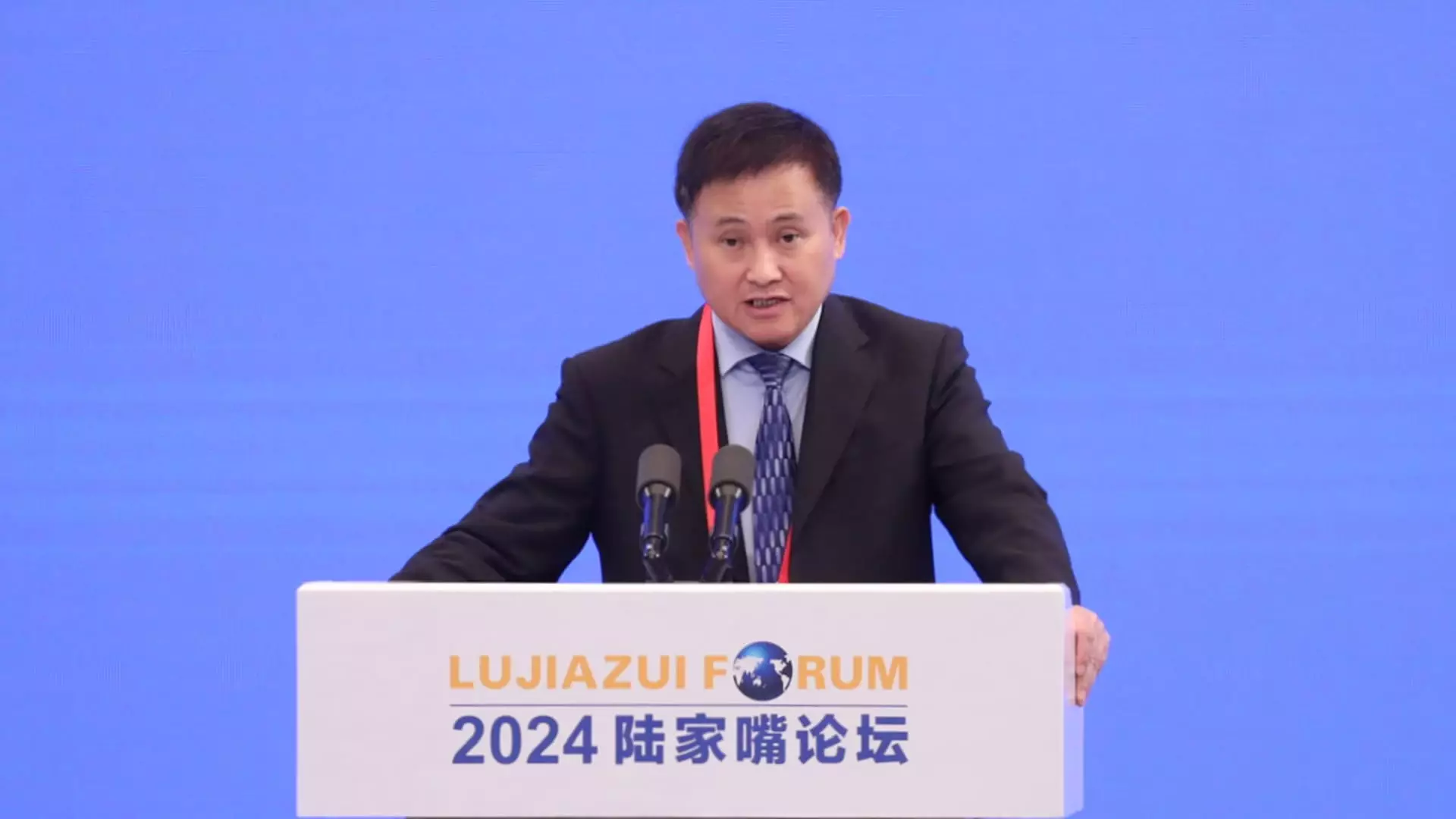The People’s Bank of China (PBOC) has announced significant adjustments to its monetary policy, a move aimed at stimulating the economy during challenging financial times. At a press conference held on Tuesday, PBOC Governor Pan Gongsheng detailed plans to reduce the reserve requirement ratio (RRR) and hinted at possible cuts to the loan prime rate (LPR). This article delves into the implications of these policy decisions on China’s economy and explores the broader context surrounding these measures.
The PBOC’s decision to lower the RRR by 50 basis points indicates an urgent response to an economic slowdown characterized by deflationary pressures. The RRR is the percentage of deposits that financial institutions must hold in reserve and reducing it allows banks to lend more, which can stimulate consumer spending and corporate investment. While the immediate impact of such a reduction is often positive in terms of liquidity and credit availability, it is crucial to assess the timing and scale of the reduction.
Pan’s comments about a potential further reduction of 0.25 to 0.5 basis points by the year’s end suggests a proactive stance by the central bank, although specifics were not confirmed. The lack of precise timelines creates an atmosphere of uncertainty, which can affect market reactions. Investors and financial analysts remain keenly focused on how soon these changes will be implemented and what broader effects they might catalyze in both domestic and international markets.
Additionally, Pan’s announcement to cut the 7-day repo rate by 0.2 percentage points highlights the central bank’s strategy to inject liquidity into the economy. The repo rate influences short-term borrowing costs, and a decrease here signals the PBOC’s intent to ease financial conditions to counter economic headwinds. After Pan’s remarks, China’s 10-year government bond yield dropped to a historic low of 2%, reflecting increased investor confidence in government bonds amidst reducing interest rates.
In contrast, the PBOC’s recent decision to maintain the LPR at existing rates could raise eyebrows. The LPR serves as a benchmark for various loans across the economy, including mortgages and corporate credits. Speculation exists that a cut here could further stimulate borrowing, which is crucial for reviving sluggish consumer spending and investment in the wake of a sluggish real estate sector.
It’s vital to place these moves within the context of global monetary policy shifts. The PBOC’s announcements came on the heels of the U.S. Federal Reserve’s decision to lower interest rates, which signals a global trend towards easing monetary policy in response to faltering economic growth. The syncretic move allows China’s central bank to better position itself in the international financial landscape while providing necessary support to its domestic economy.
Governor Pan’s tenure, having begun in July 2023, is already marked by significant challenges, including a decelerating growth rate primarily influenced by real estate market vulnerabilities and subdued consumer sentiment. Economists have urged the PBOC to consider more aggressive fiscal measures alongside its monetary policy adjustments, advocating for a synchronized approach to address the troubled economic base.
As the PBOC navigates this precarious economic environment, it is clear that a concerted effort to stimulate growth is underway. The central bank’s openness to revisiting the RRR and LPR underscores a willingness to adapt policy in the face of pressing economic challenges. Nonetheless, the timing and effectiveness of these measures remain contingent upon how domestic and global market conditions evolve. Stakeholders across the board will be closely monitoring any upcoming announcements from the PBOC, as these will ultimately dictate the trajectory of China’s economic recovery in the coming months. With careful management of liquidity and an eye towards consumer demand, China’s central bank will seek to reignite growth and stabilize its economy.


Leave a Reply